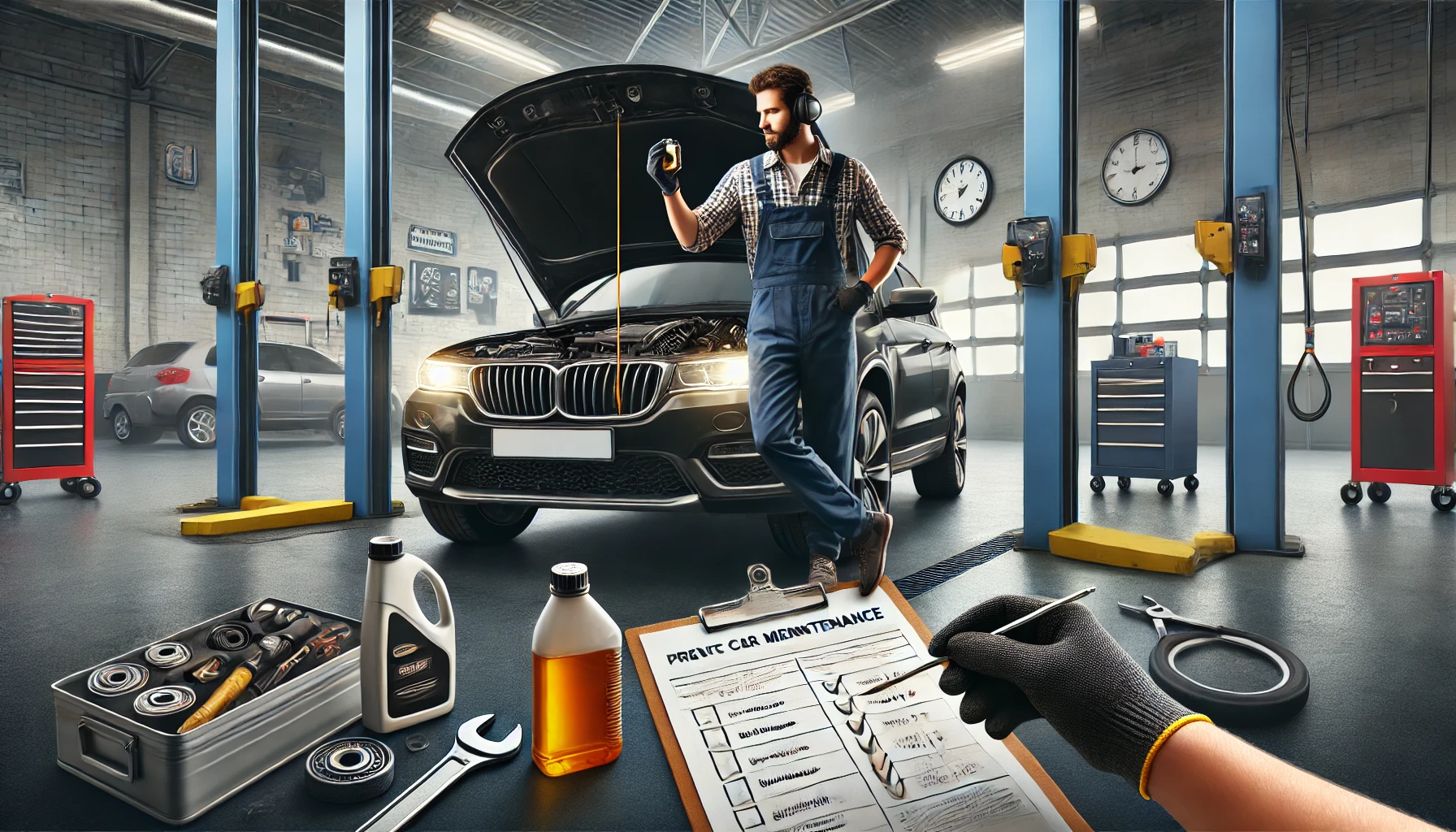Tires are one of the most critical components of a vehicle, affecting safety, fuel efficiency, and overall driving performance. Proper tire maintenance can extend their lifespan, improve handling, and help you avoid costly replacements. This guide covers essential tire care tips to prevent premature wear and keep your car running smoothly.
1. Check Tire Pressure Regularly
Underinflated or overinflated tires can cause uneven wear, reduce fuel efficiency, and increase the risk of a blowout.
Best practices for checking tire pressure:
- Use a tire pressure gauge to check pressure at least once a month.
- Check pressure when the tires are cold (before driving).
- Inflate tires to the recommended PSI listed in the owner’s manual or on the driver’s door frame.
Proper tire inflation ensures better fuel economy and even wear.
2. Rotate Your Tires Every 5,000 to 7,500 Miles
Tires wear unevenly due to weight distribution and driving habits. Rotating them regularly helps ensure even wear across all four tires.
Benefits of tire rotation:
✅ Extends tire lifespan.
✅ Improves handling and stability.
✅ Prevents excessive wear on front or rear tires.
Check your car’s manual for the recommended rotation pattern.
3. Balance Your Tires to Prevent Vibration
Unbalanced tires cause uneven tread wear, vibrations, and steering issues.
When to balance your tires:
- Every 5,000 to 7,500 miles or during rotation.
- When you feel vibrations in the steering wheel or seats.
- After replacing tires or wheels.
Balancing ensures smoother driving and reduces stress on suspension components.
4. Get a Wheel Alignment When Necessary
Misaligned wheels can cause the car to pull to one side and lead to rapid tire wear.
Signs you need an alignment:
- Uneven tire wear.
- Steering wheel is off-center while driving straight.
- Car pulls left or right.
A proper alignment improves tire longevity, fuel efficiency, and overall handling.
5. Inspect Tread Depth for Safety
Tread depth affects traction, especially in wet or icy conditions.
How to check tread depth:
- Use a tread depth gauge or the penny test (if Lincoln’s head is visible, it’s time to replace the tire).
- Replace tires when tread depth is below 2/32 of an inch (1.6 mm).
Worn-out tires increase the risk of hydroplaning and reduced braking performance.
6. Avoid Overloading Your Vehicle
Exceeding the recommended load capacity puts extra stress on the tires, leading to excessive wear and possible failure.
How to manage vehicle load:
- Check the maximum load rating on the tire sidewall.
- Avoid carrying unnecessary weight in the trunk.
- Distribute weight evenly to reduce pressure on specific tires.
Overloading can cause sidewall damage and overheating, increasing the risk of a blowout.
7. Drive Smoothly to Reduce Tire Wear
Aggressive driving habits can shorten tire life significantly.
Driving habits that increase tire wear:
❌ Hard acceleration and sudden braking.
❌ Taking sharp turns at high speeds.
❌ Driving over potholes or curbs frequently.
Driving carefully improves tire durability and overall vehicle safety.
8. Store Seasonal Tires Properly
If you use winter or summer tires, proper storage is essential to maintain their condition.
How to store tires correctly:
- Clean them before storage to remove dirt and debris.
- Store in a cool, dry place away from direct sunlight.
- Stack tires flat if not mounted on rims, or hang them to avoid flat spots.
Proper storage prevents premature aging and keeps tires in good condition for the next season.
Final Thoughts
Regular tire maintenance improves safety, extends lifespan, and enhances fuel efficiency. By checking pressure, rotating and balancing tires, aligning wheels, and driving responsibly, you can avoid premature wear and get the most out of your tires.


